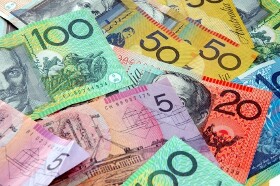
The Australian dollar weakened on signs that China’s manufacturing is slowing and amid speculations that the end of the mining boom in Australia is near. Mining is a very important sector for Australia’s economy.
Reserve Bank of Australia Governor Glenn Stevens claimed that there would be another year or two before the mining boom will peak. Stevens said that the Australian currency should become much cheaper when the boom will end. The Governor thought that the currency is stronger than it should be, but not very much so:
I think probably itâs the case that on balance it looks higher relative to the mean prediction of models, though the size of that gap is not especially large in comparison to other forecasting errors or misalignments weâve seen in the past. So itâs a bit on the high side, Iâd say, probably not dramatically so.
Meanwhile, the Swiss National Bank was buying the Australian dollar, perhaps in order to diversify from the euro. Stevens was surprised by this:
I never thought I would ever see such an anti- inflationary, conservative institution as that hold our currency as part of its reserves. Itâs a remarkable thing. But itâs a picture of how bad the world is in Europe.
AUD/USD closed at 1.0438 after falling from 1.0403 to 1.0374, the lowest since July 26. EUR/AUD closed flat at 1.2021, while intraday it rose from 1.2031 to 1.2067 — the highest level since July 10. AUD/JPY was down from 81.96 to 81.82, while its daily minimum of 81.47 was the lowest since July 27.
If you have any questions, comments or opinions regarding the Australian Dollar,
feel free to post them using the commentary form below.